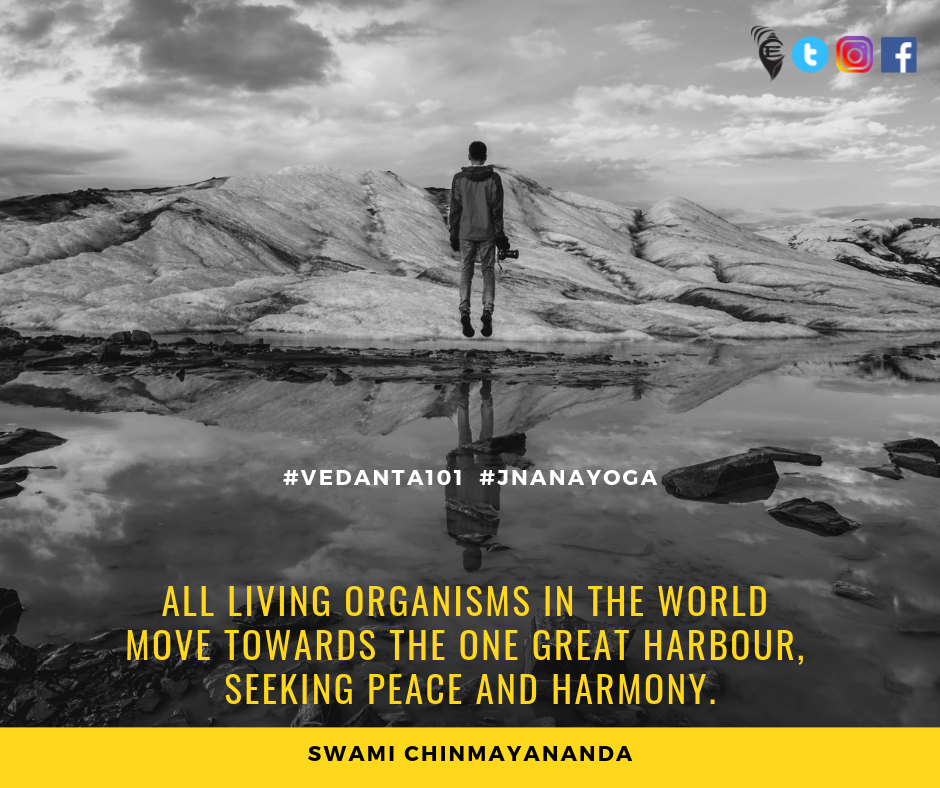The Essence of the Aitareya and Taittiriya Upanishads : 3.8. Swami Krishnananda.
Monday, November 09, 2020. 08:10. AM.
Chapter 3: Ishvara and Jiva - 8.
----------------------------------------------------------
When the divinities entered the body, perhaps they did not enter the physical body first. It must have been the astral body, though this is not very clearly stated in the Upanishad, because there is a gradual hardening of the individuality through the causal and the subtle states into the physical state. The physical one is the grossest manifestation and the most exteriorised form of the appetition of the individual. It is here, in this physical condition in which we are, that we are in the worst of conditions because we are completely isolated, cut off from things, as it is clear to every one of us. In the subtle condition, at least there is an apparent feeling of affinity of one for the other. But in the so-called waking condition of physicality, there is a complete isolation; you have nothing to do with me, and I have nothing to do with you. This is the present state of affairs.
---------------------------------
So on account of this situation and the fatigue that comes as a consequence thereof, there is the cycle of jagrat, svapna and sushupti experience. And there is a struggle again. This struggle is the battle of life. We are striving hard by one means or the other to get out of this cycle of transmigratory existence, which comes automatically as a result of the impossibility of satisfying desires in the life of one particular body. The body that is given to us, the human body for instance, is inadequate because it cannot last eternally. As it is made up of physical components, naturally it will disintegrate when the time for it comes. The disintegration of the bodily individuality takes place when the forces of the appetite of the individual which gave rise to the manifestation of the body cease and withdraw their momentum. Then the body dies. But the momentum of desire does not cease. It seeks satisfaction once again in some other direction, in some other corner of creation. So there is rebirth, and the whole process continues once again. There is again dissatisfaction, birth and death, etc.; the samsara-chakra continues.
----------------------------------
All this entire drama is beautifully explained in one verse of the Panchadasi by the author Sage Vidyaranya, where he says that from the time of the original will of the Universal to become the many, up to the entry of the Universal into the individual, it is the work of God; it is Isvara-srishti, as we call it. But from the time of the assertion of individuality by the jiva in the waking condition, through the physical system, etc., until there is liberation from this mortal experience—all this is Jiva-srishti. The entry into the body, consciousness of there being an individuality, the affirmation of it, the desires expressed through the senses, the sufferings coming as a consequence thereof, and the ultimate liberation from this so-called bondage—all these are experiences of the jiva; they are not connected with Isvara.
--------------------------------------
This, in essence, is the story of the creation given in the Aitareya Upanishad. It asserts at the same time that in spite of all this manifestation, this diversity, variety, subtlety, physicality, etc., He is still the same One Absolute Universal. He has not become something else. This is a very great solacing message to us. If we had been really thrown out from the Garden of Eden and exiled forever as captives thrown into prison, then there would be no hope of liberation, or moksha. What has happened is something else altogether. It is not an actually historical occurrence that has taken place once upon a time. It is not that God was angry with us and drove us out of the Garden. What has happened is that there has been a twist of consciousness. There has been a malady of the mind, and it has to be treated as we treat the mentally ill. The consciousness has to be treated, and the illness of the consciousness has to be removed. Then it regains its original condition.



.jpg)

Comments
Post a Comment